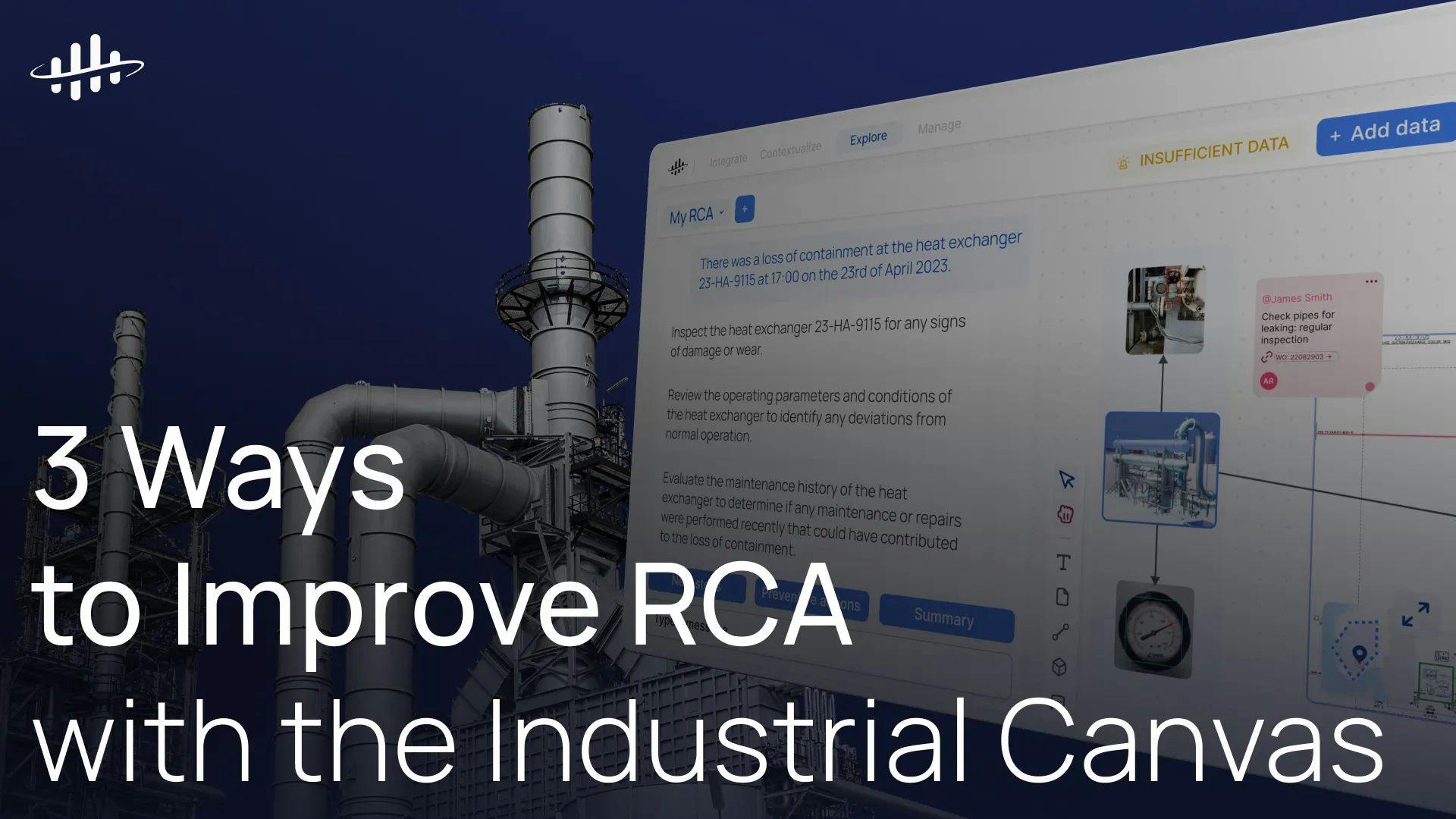3 Ways to Improve RCA with the Industrial Canvas

Incident response and the ensuing root cause analysis (RCA) process are essential engineering workflows for maintaining plant operations, improving production processes, and increasing safety, reliability, and productivity over time. But as pressure mounts for clearer answers in shorter time frames, sometimes with less human domain expertise available, access to relevant data and the means to quickly mine insights is more important than ever.
RCA is stuck in the past
In theory, due to decades of novel instrumentation and record-keeping, engineering now has more data than ever—in historians, spreadsheets, documents, emails, manuals, work orders, etc. But in practice, using this data translates into difficult, cumbersome processes to access what’s needed and start an analysis in methodical, collaborative ways. Quick time to resolution matters, especially during every minute of an expensive outage.
What’s particularly challenging about the process today?
- Data is spread across sources, requiring significant manual work. This means multiple systems and logins, time spent searching for the right documents, verifying potential out-of-date data, and making sense of the last inputs in the spreadsheet.
- Collaboration is happening all over the place. RCA is a real-time team sport happening on whiteboards, in email, across text messages and phone calls, and there is no real, centralized place to get all the needed data and for analysis to come together in short order.
- Past RCA work is exceedingly hard to reference. Retaining knowledge and best practices only matter if you can reuse them, but today it is difficult to refer to previous RCA outcomes so that users can easily learn from or compare similar incidents or rule out certain contributing factors
Industrial RCA is ripe for change.
Chemical, energy, and other process industries have been trying to become less reactive and more predictive now for decades, with mixed results. By solving the fundamental challenges with data discovery, access, and collaboration, engineers can spend more time developing compelling narratives on how the root cause was identified, what evidence was used to support the findings, and how future issues can be addressed. With simple access to complex industrial data in the frame of a more collaborative environment, teams can spend less time on analysis while still developing higher-confidence engineering outcomes and making it easy to reference in the future.
What does a more simple RCA workflow look like in practice?
Explore the three key features below, available in Cognite Data Fusion’s Industrial Canvas, the digital workspace for data-driven planning, troubleshooting, and operational insights.
Feature 1: Intuitive AI-enabled access to all relevant, contextualized data
- Start from an interactive engineering diagram to explore and source additional related data with just a few clicks
- Drag and drop time series charts, P&ID drawings, 3D models, tables, images, and more to quickly start narrowing down your analysis
- Maintain confidence in the data because it is all delivered via an industrial knowledge graph, ensuring explainable, hallucination-free results
Feature 2: AI-assisted document summarization and ability to ask questions using natural language
- Find equipment, tags, or data points using a generative AI-based chatbot for intelligent document-based search, eliminating hours of manual effort.
- Instead of re-reading long-form documents, request a summary of the content or findings in natural language and populate your canvas with the summary so that others can use it.
Feature 3: One workspace to collaborate on analysis and share insights
- Develop your RCA narrative as a “storyboard” with the ability to place and link related data and ideas to better understand the flow of analysis
- Mention colleagues in comments, annotate, tag users, share industrial insights, and build easily-referenceable investigations and analyses that future-proof your practice
It’s time to bring more effective RCA practices into the engineering workflow
Smart engineering thinking is critical for the modern operating floor. Here, simple access to complex industrial data allows SMEs and engineers to focus on critical thinking with all the data they need at their fingertips, so they can spend less time searching for and gathering data for their RCA.
Want to learn more?
- Get hands-on experience with the Industrial Canvas
- Watch Cognite’s latest Product Tour
- Read the Definitive Guide to Generative AI for Industry
See Cognite Data Fusion® in action
Get in touch with our product experts to learn more and identify quick wins